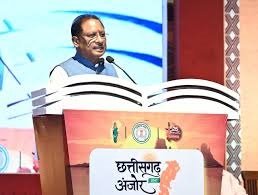Take-home salaries likely to reduce while PF, gratuity and long-term retirement benefits increase; detailed rules to be notified within 45 days
New Delhi (Economy India): The Central Government has officially brought the new Wage Code into effect from November 21, 2025, marking a major restructuring of India’s labour and compensation framework. The Wage Code—part of the government’s consolidation of 29 legacy labour laws into four modern labour codes—will require companies across the country to modify salary structures, ensuring that Basic Pay must constitute at least 50% of total CTC.
With this shift, contributions toward Provident Fund (PF), gratuity, and other statutory benefits will increase, while monthly take-home salaries for employees may decline. Experts say the reform strengthens social security and retirement protection, but may create short-term financial pressure on salaried workers.
Four Labour Codes Replacing 29 Old Laws
The government has consolidated old laws into four simplified codes:
- Code on Wages (2019)
- Industrial Relations Code (2020)
- Social Security Code (2020)
- Occupational Safety, Health and Working Conditions (OSHWC) Code (2020)
With the Wage Code already enforced, the remaining detailed rules are expected to be notified within 45 days, after which all companies will be required to restructure compensation frameworks.
What Changes Under the New Wage Definition
Under the new structure:
- Basic Pay + Dearness Allowance + Retaining Allowance
must form at least 50% of total CTC - This definition will apply to:
- PF calculation
- Gratuity calculation
- Pension benefits
Earlier, employers often kept basic salary low and increased allowances, which reduced statutory contributions. Under the new system, this practice will no longer be possible, creating uniformity and transparency.
Impact on Take-Home Salary: Example
If an employee’s CTC is ₹50,000 per month:
Before Code
- Basic salary: ₹15,000–₹20,000 (30–40% of CTC)
- PF contribution (12% of basic): ₹1,800–₹2,400
After Code
- Basic salary must be ₹25,000 (50% of CTC)
- PF contribution: ₹3,000
- Take-home salary down by approx ₹1,200
Gratuity will also increase because it will now be calculated on wages including certain allowances, not just basic pay.
Expert View
Anjali Malhotra, Partner at Nangia Group, explained:
“Under the new definition, wages must account for 50% of total remuneration, including basic pay, dearness allowance and retaining allowance. This will result in higher PF and gratuity contributions, impacting take-home pay, especially for lower and mid-level employees.”
PF, Gratuity and Social Security Benefits Strengthen
Key improvements:
✅ PF calculated on full wages
✅ Gratuity now payable after just 1 year (earlier 5 years)
✅ Universal minimum wages based on living standards
✅ Coverage for both organised and unorganised sector workers
Gig Worker Provisions
Companies employing gig and platform workers (such as delivery riders) must:
- contribute 1–2% of turnover
- capped at 5% of payments made to gig workers
Puneet Gupta of EY India said:
“Gratuity payouts will rise significantly as the calculation shifts beyond basic pay to wages. Long-term retirement security will improve even though employers may adjust allowance structures.”
Why the Government Introduced These Reforms
The four codes aim to:
- modernize India’s workforce regulation
- increase formalisation
- reduce compliance complexity
- unify wage definitions
- promote gender equality in hiring and pay
- digitise labour processes
Reforms also include:
- layoff threshold increased from 100 to 300 workers
- overtime at double pay
- single-license digital compliance
- randomized inspections instead of inspector visits
Impact on Employers
Cost Pressures
- higher PF and gratuity burden
- increase in labour overheads
- restructuring of salary architecture
- new contributions for gig platforms
Relief Measures
- decriminalisation of violations
- monetary penalties instead of imprisonment
- recognition of work-from-home
- flexible working hours through mutual consent
- easier layoffs for larger units
- simplified compliance for MSMEs
Analysts believe MSMEs will adapt faster, while large corporations may require restructuring cycles.
Future Outlook: What Employees Can Expect
Likely developments:
✅ higher retirement savings
✅ stronger financial security for gig workers
✅ formal appointment letters
✅ wider coverage for informal workforce
✅ reduced wage discrimination
The government is expected to release clarifications on CTC adjustment guidelines to prevent disproportionate take-home reductions.
Workers earning up to ₹24,000 per month CTC are expected to benefit the most under universal wage provisions
The implementation of the Wage Code marks one of the most significant labour reforms in India’s economic history. While employees may feel short-term salary compression, the long-term effect is positioned to strengthen social security, pension protection, and financial dignity for millions of workers.
The transition phase is expected to trigger negotiations between employers and employees as companies redraw payroll structures in compliance with the new regulation.
(Economy India)











